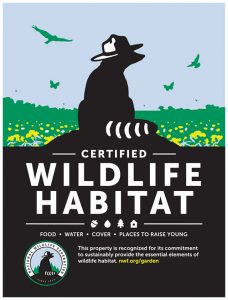Longleaf Pine Ecosystem
Besides aligning with the Foundation’s vision for restoring the historic and ecological integrity of the Hitchcock Woods, Longleaf pine wiregrass ecosystems are the most biologically diverse in North America (2nd only to the Amazon!) and provide quality habitat for a variety of plant and wildlife species. Longleaf pines are also highly resilient and referred to as “the trees that built the south” due to the cultural and historic impact they have had on our region.
The longleaf pine / wiregrass ecosystem once covered approximately 90 million acres in the Southeast. Shaped by thousands of years of natural fires, this unique ecosystem has been reduced to fewer than two million acres, or a 98 percent decline. Only scattered patches of the longleaf pine / wiregrass ecosystem remain, primarily in the Carolinas, Georgia, Florida, Alabama, Louisiana, and Texas.
Factors contributing to the decline of this ecosystem include fire suppression, clearing for agriculture and development, aggressive logging at the turn of the last century, and conversion to other pines for faster growth and profits. The longleaf pine ecosystem is not just more tolerant of fire than other pine communities; it actually requires fire for its survival. In addition, more than 30 plant and animal species associated with the longleaf pine ecosystem are listed as threatened or endangered.
Most people consider fire to be a destructive force when it occurs in a forest. This is not the case with the longleaf pine. For thousands of years, natural fires ran almost unimpeded throughout the longleaf pine ecosystem. The pine needles, wiregrass, and other plants fueled fires that burned, on average, at least every two to five years. Lightning storms ignited the fires; then Native Americans also began to burn the woods to clear agricultural fields or to hunt game.
The frequent fires reduced the amount of “forest litter” on the ground, so the fires were mostly low-intensity, surface blazes that killed few trees. Fires in the spring or early summer would play a critical role by clearing the ground of grasses and needles so that seeds, dropping from their cones in the autumn, could quickly absorb the nutrients in the ash.
Germination of the longleaf pine occurs within a week or two. After several years of developing a strong tap root, the longleaf pine begins to grow in spurts, two or three feet during each growing season. This rapid growth quickly lifts the growing tips above the level of most ground fires, and the trunk grows a thick bark that protects the tree from fire. In time, the tree becomes resistant to all but the hottest of fires.
Source: U.S. Fish & Wildlife Service (http://www.fws.gov/carolinasandhills/longleaf.html)






